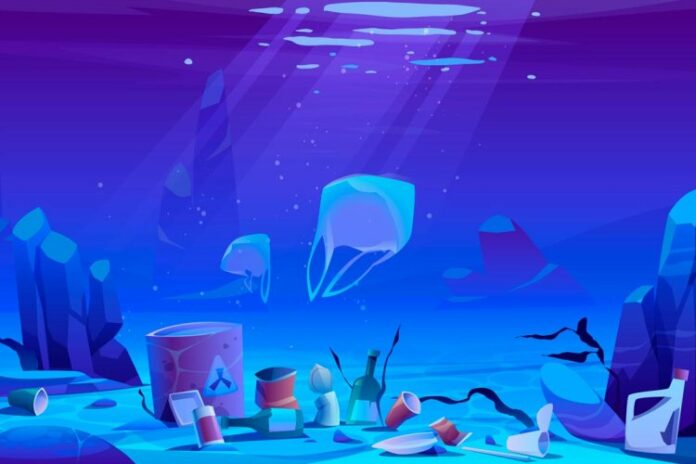A team of scientists from the Senckenberg Research Institute and Natural History Museum Frankfurt, the University of Basel, and the Alfred Wegener Institute, Helmholtz Centre for Polar and Marine Research, has completed the most comprehensive study of (macro)plastic waste at depths of up to 9,600 meters.
In their study, published in the journal “Environmental Pollution,” the researchers analyzed the amount, material, and type of plastic debris in the Pacific Kuril-Kamchatka Deep-Sea Trench. They show that most of the plastic debris originates from regional shipping routes and fisheries. The team warns that deep-sea trenches could become “garbage dumps of the seas.”
At least since 2018, when the headlights of a submersible revealed a shopping bag at a depth of 11,000 meters in the Mariana Trench, the presence of plastic waste in the deep sea has been undeniable.
“Even though there is now a growing awareness of the plastic problem, the amount of plastic produced worldwide has increased very significantly over the last 70 years – 391 million tons were produced in 2021 alone,” relates Dr. Serena Abel, currently a postdoctoral researcher at the University of Basel, and she continues, “The interconnectedness of the oceans via ocean currents, combined with the transportability of buoyant plastic materials, makes plastic pollution a global problem. Especially in abyssal and hadal depths, where the main degradation factors such as photodegradation (i.e., changes under the influence of sunlight) and wave action are absent, plastic accumulates and persists for a long time – up to several hundred years. Recent records from deep-sea trenches show the omnipresence of the human footprint even in places inaccessible to us humans.”
In her new study, the research associate, together with Senckenberg marine scientist Prof. Dr. Angelika Brandt and colleagues from the Alfred Wegener Institute, Helmholtz Centre for Polar and Marine Research, investigated the presence of plastic waste in the Kuril-Kamchatka Trench, a 2,250-kilometer-long deep-sea trench in the northwestern part of the Pacific Ocean. With the help of trawl nets and an epibenthic sled, the scientists sampled 13 stations at depths between 5,134 and 9,582 meters.
“To our knowledge, this is the deepest deployment of trawl nets for the study of plastic pollution ever,” explains Brandt, and she continues, “Our results are alarming: in all of our samples we found (macro) plastic debris – with a total of 111 objects.”
Industrial packaging and material attributable to fishing were the most common waste components in the Kuril-Kamchatka Trench, most likely originating from long-distance transport through the Kuroshio Expansion Current or from regional shipping routes and fisheries. At 33 percent, strings and cords were the most common debris, followed by plastic fragments (23%) and industrial packaging (11%). Obvious labels in Japanese, Korean, and Spanish were evident on six pieces of plastic waste.
“By categorizing the anthropogenic waste according to its intended use, it was possible to distinguish the two main sources of plastics that settle on the bottom of the trench – packaging and fisheries. Our spectroscopic analyses also allowed us to identify the main types of polymers, namely polyethylene, polypropylene, and nylon. These polymers are quite stable in the marine environment as they are not hydrolytically degraded and are most likely to end up at the bottom of the trench without breaking down into smaller components,” adds Abel
The remote location and high sedimentation rates of the Kuril-Kamchatka Trench favor it as a potential site for extensive plastic pollution, which could turn the trench into one of the world’s most contaminated marine areas and an oceanic plastic deposition zone, according to the study.
“Our findings emphasize the urgent need for new policies on waste treatment and plastic production! The sea floor must not become a dumping ground for plastic waste!” demands Brandt.



